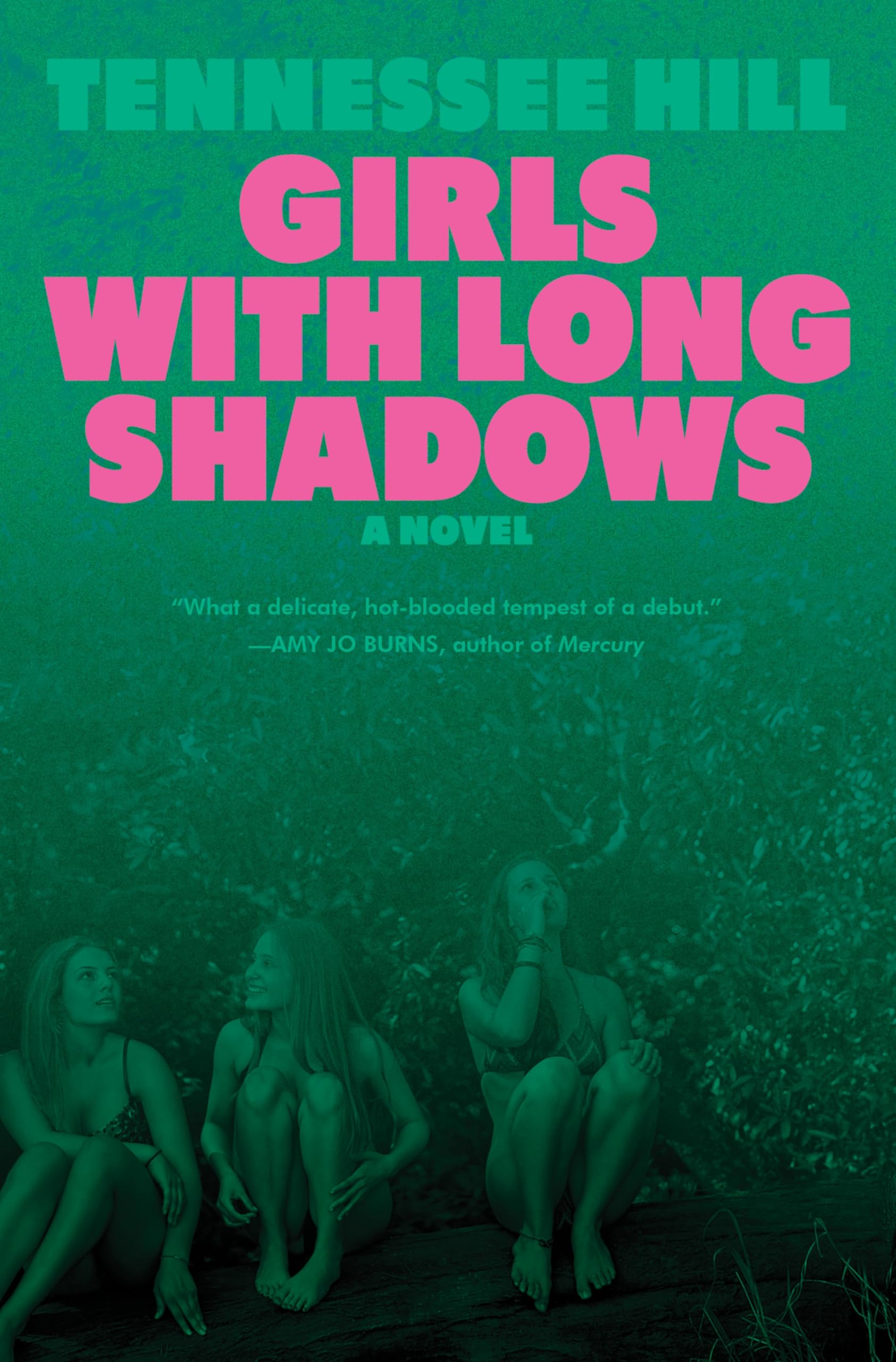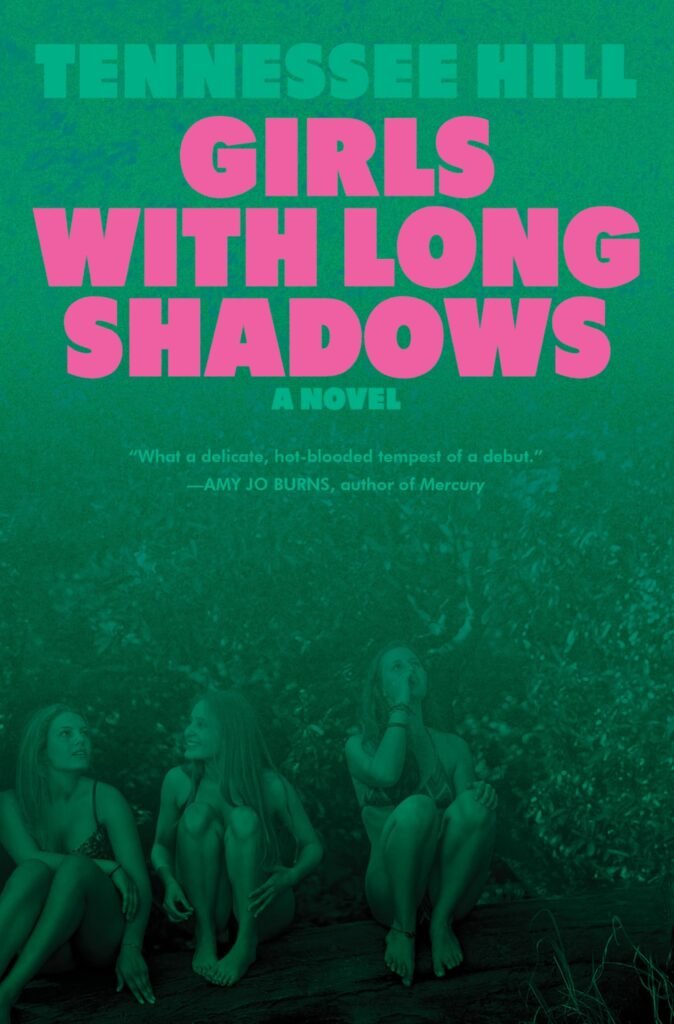Fear & Desire in Longshadow:
An interview with TENNESSEE HILL about her debut novel, Girls With Long Shadows
Tennessee Hill’s Girls With Long Shadows (May 6, 2025) is “an intoxicating Southern Gothic debut novel about identical triplets whose lives are devastated when their burgeoning desires turn deadly.” (Links to purchase can be found here.) I talked with Tennessee about the themes and Southern Gothic overtones of this sizzling, swampy novel – a perfect summer book to scratch your itch for haunts until the fall!

“The idea of looming doom or danger is so important to the Southern Gothic and as a Texan, this danger is inherent in the landscape.”
While Texas is undeniably a big part of the American South, it has its own independent regional identity, and can sometimes feel quite distinct from the Deep South – states like Mississippi, Georgia, Louisiana, for example. Southern Gothic novels are often associated with the Deep South, but this novel still evokes all the swampiness, heat, and anxiety of the genre. Can you tell me about how you envisioned and situated this Texas town within the Southern Gothic ethos? How were you thinking about the setting as you wrote? And as a Texas native, how do you position Texas in this region and genre?
TH: The idea of looming doom or danger is so important to the Southern Gothic and as a Texan, this danger is inherent in the landscape, particularly the volatility of water and weather. As I tried to consider how I could honor and challenge the tenants of the Southern Gothic, I leaned most into what I could do with the setting. Funnily enough, I leaned on Floridian literature like Swamplandia! and Florida and Their Eyes Were Watching God when I was writing this novel, so I wasn’t thinking of Texas literature as much as I was thinking about how to amplify the components of place in the Southern Gothic tradition in a way that was serving the plot.
Desire and intimacy feel almost threatening, or at least anxiety-inducing, for Baby B, and for a lot of the characters here. On the flip side, the triplets have (or believe they have) a level of vulnerability and intimacy with each other that approaches the supernatural. To me, this tension felt like an emotional core of the novel. Can you tell me a bit about how you were thinking about desire (vulnerability, intimacy) here?
TH: With this, I wanted to hug the borders of surrealism as closely as I could without fully venturing over. The sisters are so eager to have things that are their own, so I thought it was an interesting tension that they can’t even protect their physical and emotional experiences – they’re so tied to one another that their sisters can feel what they feel physically, like a stomachache or butterflies. The triplets are forced to share so much already that having to share their physical sensations felt like a potent way to tip each of them over the edge, and to see what this would make them do. This connection is a vulnerability and intimacy they can’t opt out of.

Identity is also a big thematic core of the book. Tell me about your decision to name the triplets Baby A, B, and C. Were you considering anything in particular, thematically or otherwise, when you made that decision?
TH: When multiples are in gestation, they are labeled by medical professionals: Baby A, Baby B, and so on, until after they are born, which I’ve always found fascinating. Their names were the first creative decision I made and much of the novel’s plot was built around justifying these as their names, which was wonderfully fun.
Interestingly, I found when I was reading that Baby C felt like the oldest sibling, while Baby A felt like the youngest, despite their names implying the opposite. Did you have a sense of any kind of sibling hierarchy between the triplets? Part “B” to this question: Baby B feels very much like the middle sibling. Were you thinking of her in this way, and how did this play into your exploration of her identity?
TH: I thought about the dynamics of a three-person relationship more than I did birth order because with multiples, nobody is truly older or younger. But in a three-person group, somebody has to be willing to go back-and-forth between the other two, whether those two are both dominant, or in this case, Baby A is very dominant and Baby C is quite submissive. It was most helpful to me to have the narrator, Baby B, be the flexible figure. I thought of her more as the flexible sister than as the middle child.

Gull and Jason act as refreshing foils to the rest of the boys in the novel, but they are also both brotherly figures to the triplets. How do you see their roles within the story, and within the larger role that men and boys play in the triplets’ lives?
TH: Gull is such a tender, reflective mirror for how the girls’ behavior is affecting others outside of their unit. I think having a very young child in their house keeps them even more secretive than they already are, in an effort to protect him. Jason, who they regard as a cousin, felt like the perfect buffer between the larger town and the girls because he is fiercely loyal to them, but as other boys in town start to cross boundaries, he doesn’t quite show up for the triplets in the way a forceful older brother might. I think Jason lets them down a bit, and Gull is a reminder that they are letting people down, too. The role of men at large in the novel, who are mostly in the 19–21-year-old range, is to have constant wonderings like most women do: who is a protector and who is a threat, and can you tell when someone might switch between the two?
Speaking of family: mothers! So many women play motherly roles for the triplets, including the triplets themselves, and yet they are, understandably, enveloped by the ghost of their biological mother. (They also seem largely unbothered by the absence of their biological father, whose identity they can only guess.) How did this theme of motherhood – as an identity, a practice, a mysticism – inform your understanding of these characters and their relationships?
(“Maybe it is always about mothers” is a standout line in the novel. It brought me back to writer Jill McCorkle‘s class, which Tennessee and I took together in graduate school – McCorkle’s popular catchphrase was “if it’s not one thing, it’s your mother.” Is there any better writing advice than that?)
TH: I think of Jill saying that all the time. I remember the moment she said that to us and how rocked by it everybody in the room was! There really isn’t any better writing advice. I like that you categorize motherhood as a practice, because it certainly is. The figure of Gram is one of those deeply complicated women who isn’t enthusiastic about mothering and it doesn’t come naturally to her, but she tries in sincere bursts. I was really interested in the idea of: is trying enough? I think the people in the town, in their best moments, try to be warm towards the sisters, but they fail on the whole because these are isolated moments. The sisters aren’t truly, wholly mothered by anyone. They try to be maternal towards one another, but they’re still kids in many ways, and they’re also siblings so they’re not receptive to each other’s mothering. There’s a powerful unpredictability to a character that yearns for nurturing and direction.

“I was intrigued by the Southern Gothic themes of fate and inevitability that often come from these preoccupations with religion.”
Another element that comes up quite often is fortune-telling, Baby C’s fixation. It evokes themes of fate and destiny, but also a sense of foreboding and inevitability. The second half brings to light a lot of questions about the nature of controlling one’s fate as well. Were you thinking of the events of the story as inevitabilities, direct consequences of characters’ actions, or both? Or is it perhaps up to us as readers to consider?
TH: I think the Southern Gothic is often thinking about Christianity and Catholicism in a way I was not interested in, but I was still intrigued by the Southern Gothic themes of fate and inevitability that often come from these preoccupations with religion. I really resist the notion that anything is inevitable, and I think that these sisters would say the same; otherwise, what is the point of their struggling and hustling towards a better life? But I did, as a writer, do a lot of work foreshadowing and building tensions that wouldn’t leave the reader completely confounded at the novel’s twist ending. I think the idea that the novel is orbiting with the ending is not fate, but rather how helpless it is to be a human, to be able to control your own decisions and to ultimately still be at the mercy of the decisions of other people, too.
A lot of this book explores grief very potently, both in an emotional and physical sense. As you were writing, did you have a plan for how each of these characters would react to and embody their grief, or did you feel you discovered it alongside them as you wrote?
TH: I did not have a plan of any kind while I was writing, which I do not recommend, ha. So no, I didn’t have an emotional trajectory in mind for any of the characters. When it became clear to me that the novel was going to think heavily about grief, I tried to remind myself that scenes of irrational emotionality shared between a couple of people are what make a book or a movie that looks closely at grief interesting — the moments where the piece looks at how grief can pull a person out-of-character. I also think the novel allows grief to have permanent consequences. Even though experiencing grief is vulnerable and messy and often given a lot of latitude, some of the decisions that characters make because of grief are still bad decisions.
As a writer, what did you learn about your own writing, or yourself, while writing this debut novel? Is there anything from this novel that you think you’ll take into future writing?
TH: I learned so much! The most valuable lesson I learned is that I can write a novel. I can do it! And now that I’ve done it, it feels so much more approachable to think and dream in the direction of a lifetime as a writer because I know what it looks like to write a book while balancing a full-time job and a family and the demands of life. Second to that, I learned that help is so beautiful and necessary. Having the help and wisdom of an agent and an editor and friends who are willing to read changed the entire process for me, allowing me to shed some heavy self-consciousness and anxieties. I also made the foray from writing in a desktop Word document to Google Docs, which was life changing. I learned the power of taking a long walk, and switching to decaf — hot take, I know. I learned that reading and thinking and time spent away from the project are as productive as physical writing.
Tennessee Hill holds an MFA from North Carolina State University. She has been featured in Best New Poets, POETRY, Adroit Journal, Southern Humanities Review, Arkansas International, and elsewhere. She lives and teaches in Houston.

